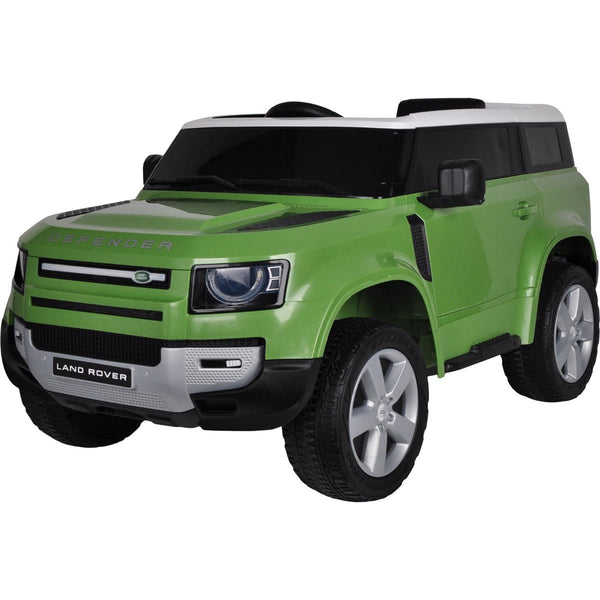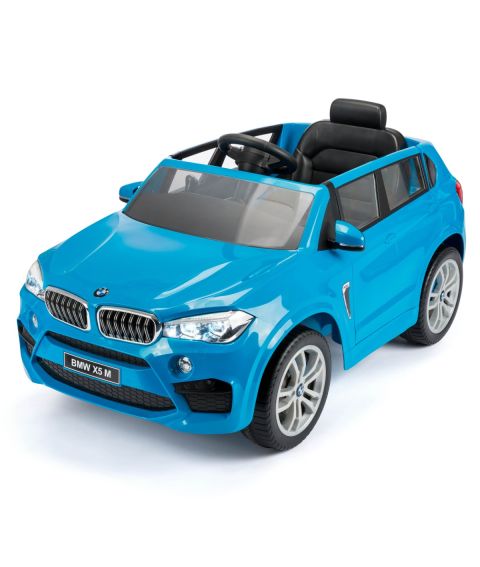Great Facts On Deciding On Kids Ride On Cars
Wiki Article
What Do I Need To Know About The Battery Life And Charging Times Of An Electric Children's Ride-On Vehicle?
It is important to understand the life span of your battery for the electric ride-on vehicle for children and how long it takes to recharge. This will ensure you have uninterrupted playtime. Here's the information you need to know: Type of Battery
The majority of electric vehicles for children can be recharged, and usually utilize lithium-ion battery or lead-acid battery. In general, rechargeable lithium-ion batteries have a longer battery life and also faster charging times than lead-acid ones.
Capacity of Battery -
The size of the battery, which is measured in amperehours (Ah) or watthours(Wh), will determine how long a ride on car can be operated with one charge. High capacity batteries allow for longer playtime, without needing recharge.
Run Time -
This is the length of time that an electric ride-on is able to run continuously after a single charging. This can be affected by a variety of factors, including the capacity of the battery, strength of motor, the terrain and the weight of the driver.
For electric cars typically, the run time is 30 minutes up to 2 hours on a single battery charge. Some battery packs with higher capacity can offer longer time-to-run.
Charging Time
Charging time is the amount of time it takes for the battery to fully charged after it has been exhausted. The time to charge is based on the specifications of the charger capacity, battery capacity, and the charging method.
The typical charging time for electric ride-on vehicles is between 8 and 12 hours. Some models, particularly those that use lithium-ion batteries, may have faster charging times.
It's crucial to follow the instructions of the manufacturer when charging to ensure durability and safety of the battery. Undercharging or overcharging the batteries can have a negative impact on their performance and lifespan.
Charge Methods Charge Methods
Chargers for electric ride-ons are usually connected to standard electrical outlets. Some models may offer rapid charging capabilities or a smart charger that monitors the battery's charge status and adjusts charging rates accordingly.
To ensure that there is no damage to the electrical system or battery make sure that the charging connector and port are compatible with chargers supplied in your ride-on car.
Additional Batteries
Some electric cars allow the purchase of extra or extra batteries. This could extend play time. It is possible to replace worn-out batteries with new ones which are fully charged thus minimizing duration between sessions.
Understanding the battery life and charging time of an electric ride-on kids car is a guarantee that your child can enjoy uninterrupted playtime and fun adventures while exploring their surroundings. Battery life can be maximized by charging the battery regularly and using proper charging techniques. See the most popular electric kids cars for blog examples including childs ride on car, toy car toy car, digger ride, toy in car, childs electric ride on car, race car toy car, kidscars, electric ride along car, car toy toy, electric ride on cars and more. .

What Maintenance And Assembly Requirements Exist For Kids' Rides On Cars?
For optimal efficiency, safety, and durability, kid's rides-on cars require some form of assembly. Here are a few common maintenance and assembly requirements for children's ride-on cars:
The majority of ride-on cars come partially assembled and require some sort of assembly. Connecting steering wheels, wheels, seats, and other components as according to the directions provided by the manufacturer is usually required.
Follow the assembly instructions closely to ensure all components are correctly aligned and securely secured. Make use of the tools and hardware to complete the assembly.
Cleaning -
The ride-on vehicles should be maintained regularly to ensure they look their best and function effectively. Clean up the exterior surfaces using the help of a soft, damp sponge or cloth that has been soaked in mild soapy water. This will remove dirt, dust and other particles.
Pay particular attention to areas that are susceptible to accumulation such as undercarriage, tires, and wheels. Brush or use the tooth brush to clean areas that are difficult to reach and remove stubborn dirt.
Utilizing harsh chemicals, abrasive cleaners, or high pressure water sprays could damage electronic or paint components on the ride-on vehicles.
Battery Care -
If the ride-on vehicle is powered with a rechargeable battery taking care of the battery is crucial to maintain performance and prolong the life of the battery. Here are some guidelines on battery care.
Charge the battery before each use and then fully after each use. This will ensure that you get the best performance.
Avoid charging batteries excessively or leaving them hooked up to chargers for extended time. This can cause damage to batteries and decrease their lifespan.
The ride-on car battery must be kept in a cool and dry space when not in use and away from direct sunlight or extreme temperatures.
Regularly check the battery terminals for damage or corrosion, and clean them using a terminal cleaner or wire brush if necessary.
Replace the battery in the event that it is no longer holding an charge or is showing signs of damage or deterioration.
Tire Maintenance -
Regularly check the tires for signs of damage, wear or loss of air. Inflate the tires to the recommended pressure with an air pump or bicycle compressor if needed.
Examine the tread pattern of your tires for obstructions and foreign matter that may cause punctures or flats. Replace or repair damaged tires, if needed. Clear obstructions.
Lubricate the wheel bearings, as well as other components to ensure smooth and efficient rotation.
Replace or repair parts as needed -
Despite regular maintenance, some rides may require repairs or replacement of parts due to wear and wear and tear.
Be alert for indications that your system is failing or is deteriorating, such as unusual sound or behavior, power loss, or other abnormalities. Refer to the manufacturer's specifications or call customer support for guidance on troubleshooting and repair solutions.
Replace damaged or worn-out components as soon as possible to prevent further damage and ensure safety and function of the vehicle that rides on.
Follow these guidelines to keep your child's vehicle that he rides on and to provide hours of enjoyment and safe play time for them. Have a look at the top go here about kids cars for website examples including toy car for car, car toy car toy, ride ons, 2 seater electric cars, toy in car, car electric ride on, toy car for car, kiddies cars, electric ride on, ride ons and more. .

What Is The Most Reliable Remote Control Car For Kids? What Are The Advantages And Disadvantages?
Remote control children's cars are also referred to as RC cars or remote-controlled automobiles, come in various dimensions and styles as well as prices to meet different preferences and budgets. The pros and cons as well as the sizes styles, models, and prices, and styles of remote-controlled cars for children are listed below.
Electric RC Cars – These are battery-powered, remote-controlled vehicles which can be used indoors and out. The cars are available in various styles, such as trucks or buggies.
Nitro RC Cars – Gas-powered remote controlled vehicles that have higher performance and speeds however, greater maintenance and knowledge is required to operate. They tend to be larger and more expensive than electric RC vehicles.
Scale Models (Remote-controlled replicas) They are miniatures of real-life vehicles like cars, trucks or planes. Scale Models are available in a range of sizes which range from 1-10 all the way to 1-24. Larger scales give greater detail and an authentic appearance.
Sizes -
Remotely controlled children's cars come in various sizes. These range from small miniature replicas to larger-scale copies. The size and weight of the car can affect the performance.
Micro-sized vehicles are small and light, and therefore perfect for indoor use and play by children who are younger. These larger models offer greater power and endurance and are perfect for racing outdoors and off-road driving.
Prices
Prices differ based on the size, features brand and the build quality.
Micro-sized electric RC cars can vary from $20 to $100 While larger-scale electric and nitro RC cars are available between $100 and $500 or more.
The price of scale models as well as hobby-grade RC vehicles can range from several hundred dollars up to over 1,000 dollars based on their performance and detail.
What are the pros and cons?
Pros -
Children and adults will enjoy hours of fun and entertainment by controlling their cars via remotes.
Learning. Driving a RC car lets children develop hand-eye coordination, spatial awareness and problem-solving capabilities.
Social Interaction: RC cars are a great way to play by families and friends, promoting social interaction and collaboration.
Aftermarket parts, upgrades, accessories and other products from the aftermarket are a great way to personalize numerous RC vehicles and enhance their performance.
Cons -
Cost - High-end models with the latest features, like hobby-grade cars, can be expensive.
Learning Curve – Operating a RC vehicle requires practice and skill. Children who are younger may find it difficult to control the controls.
Maintenance is essential for car owners who own RC vehicles. They should regularly clean, lubricate and perform repairs or replace the parts.
Safety Issues RC automobiles pose a security risk, and can cause electrical hazards, collisions and falls if not used under supervision of an adult.
In general, remote-controlled kids' vehicles provide a thrilling and learning experience for children of all ages. However, when choosing the model that's right for your child you should consider things like the price dimensions, size, features, and security. The hobby-grade RC cars may be best for older kids or people who enjoy. The simpler models are ideal for children who are just beginning their journey. Follow the recommended Audi ride on car kidscars.co.uk info for blog recommendations including toy and car, two seater electric cars, two seater childrens electric cars, 2 seater electric cars, remote control childrens electric cars, electric two seater cars, electric toy car, cars pedal car, toy car for car, toy car and more. .
